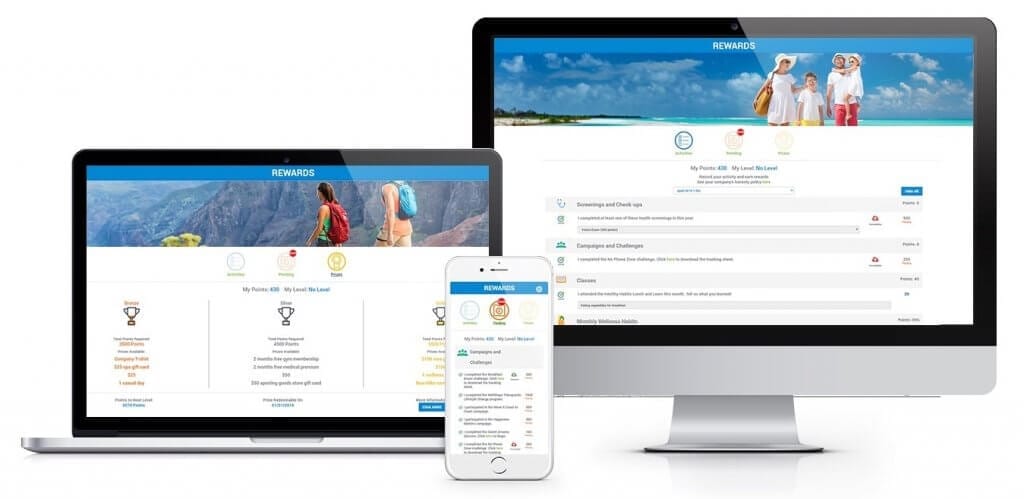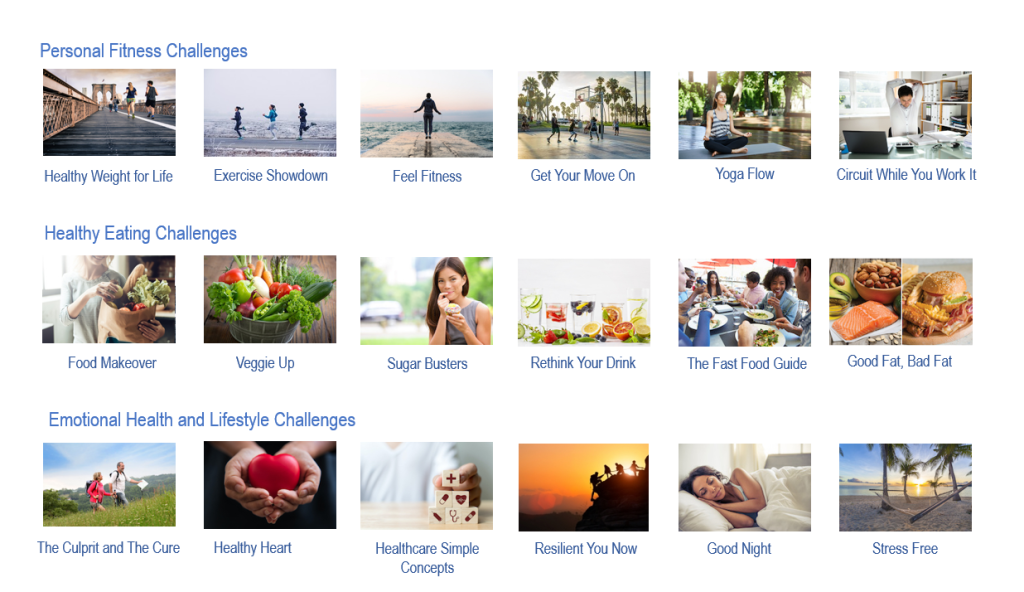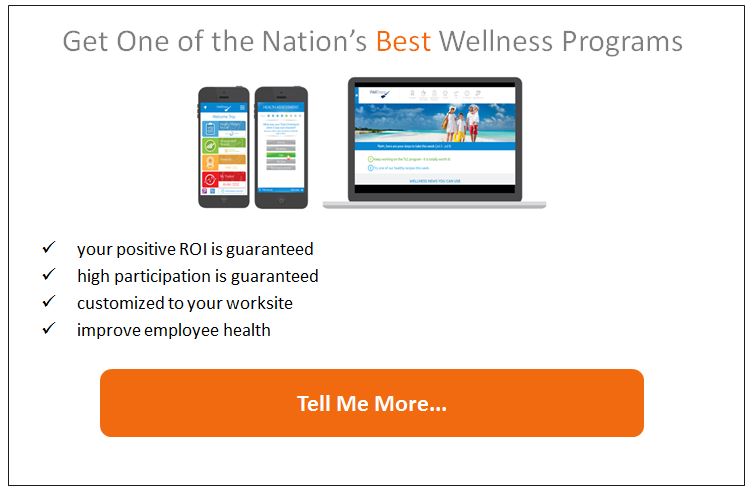What exactly is a virtual wellness program and how is it different from traditional types?
Virtual wellness programs are not new. In fact, they have been in existence ever since the internet became popular. But with recent advances in smartphone technology and mobile apps, more and more companies have started to embrace these programs in the last decade.
Virtual wellness programs really took off when COVID-19 forced a significant portion of the global workforce to work from home. With increased popularity, these programs will likely continue to help employees stay healthy while they work remotely.

What Is a Virtual Wellness Program?
In short, a virtual wellness program is a health program facilitated through a digital or online setting. However, as a holistic and comprehensive health program, it typically includes physical health, mental health, and occupational or workplace health.
Virtual wellness programs are also known as digital wellness programs or online wellness programs. Since these programs often involve wellness challenges, some companies also refer to them as online wellness challenges.
RELATED: How to Build a Workplace Wellness Challenges
Virtual Wellness Programs Vs. Traditional (On-Site) Wellness Programs
Apart from using mainly digital means, virtual wellness programs are different from traditional or on-site wellness programs in many ways.
| Virtual Wellness Programs | Traditional Wellness Programs |
| Monitoring is made easy because most employees are online during work hours | More opportunities for face-to-face interaction, which can build better trust |
| Employees in the field can also utilize mobile apps | Facilitates one-on-one coaching, which benefits those who need guidance or motivation the most |
| Reduced costs in the long run since you’re not paying for the salary of an on-site wellness coordinator | Close coordination with HR or management allows customization of the wellness program |
| Challenges: Face-to-face interaction and one-on-one in person coaching | Challenges: Costs of employing a wellness coordinator on-site and social distancing may limit on-site interaction |
One other thing that separates digital wellness programs from on-site wellness programs is their unique components.
What is Included in a Virtual Wellness Program?
A virtual wellness program may include all physical health, mental health, and occupational health activities that can be facilitated through the internet. Such as:
- incentive programs
- webinars
- workshops
- classes
- fitness challenges,
These programs may also consist of components present in on-site wellness program. They were just as well as long as they can be conducted or accomplished online.
PHYSICAL Health Activities
- Virtual exercise classes (yoga, physical fitness videos)
- Nutrition consultations
- Fitness challenges (for individuals or teams)
- Weight management webinars
- Health awareness webinars
- Online physician consultations
- Screening recommendations based on age, gender, and risk factors
- cardio workouts
- body weight training
MENTAL Health Activities
- Guided meditation sessions
- Cooking classes
- Online therapist consultations
- Stress management webinars
OCCUPATIONAL Health Activities
- Virtual team building activities
- Behavior change videos or webinars
- Work-life balance webinars
- Home ergonomics webinars

RELATED: 7 Simple Strategies to Integrate Health and Wellness Programs in the Workplace
Other Health Activities
- Online options for tracking employees’ wellness data and progress, such as with apps or wearable devices
- Incentive programs
- A social component to foster connections
Companies may choose to further customize their online wellness programs depending on the exact needs of their workforce. And, of course, budget considerations also come into play.
How Much Does a Virtual Wellness Program Cost?
The cost of a virtual wellness program will vary depending on its specific components. The cost may depend on whether or not a wellness provider will sell a virtual wellness program as a standalone offer or as part of a bigger package, i.e., a comprehensive wellness program that may include on-site components.
Price also varies based on the structures available for online wellness programs. Some vendors may offer virtual wellness programs based on a subscription model, wherein an employee pays a fixed monthly subscription rate to gain access to a virtual wellness portal.
Other vendors offer a per-class costing option. A pass for any class could range between $15 to $20, with the pricing sometimes dependent on class duration.
Rates also vary depending on subscription tiers. An employee could pay between $5 for basic subscription tiers to $150 monthly for a specific online wellness studio or platform.
There are times when the pricing structure is designed for corporate clients instead of individual subscriptions. In this structure, a corporate client pays a monthly or quarterly fee to a wellness vendor and is given digital keys to a branded or customized virtual wellness portal.
Now that we’re finished tackling the cost, it’s time we look into the seven ways in which a virtual wellness program can create healthy and happy employees.
RELATED: How Much Does An Employee Wellness Program Cost?
7 Ways A Virtual Wellness Program Can Make Employees Healthy
- Virtual Programs Give Remote Workers Access to Telehealth Services
- Virtual Programs Offer an Online Library of Virtual Wellness Resources
- Going Virtual Gives Employees More Flexibility
- Virtual Programs Encourage More Focus on Prevention
- Virtual Programs Allow More Privacy
- Employees Join Live Virtual Wellness Sessions
- Virtual Programs Create Fun Wellness Challenges with Incentives for Employees

1. Virtual Programs Give Remote Workers Access to Telehealth Services
Accessibility is one big benefit that virtual wellness programs offer your employees. Because it is accessible online, virtual access is just a click away for members of your team.
Remote workers may have the most to gain from digital wellness programs. With COVID-19 still affecting many populations, remote workers can’t always participate in on-site wellness program activities.
That shouldn’t be a problem if the wellness program is done online. Without leaving their homes, your remote employees can still enjoy telehealth and wellness services, such as:
- Ask-a-doctor live sessions
- Consultations with nutritionists
Even their mental health needs can be addressed through virtual sessions. It’s not unusual for most online wellness programs today to include the following mental health services:
- Teletherapist consultations
- Work-related stress management sessions
- Podcasts offering self-help tips
- Yoga classes
- Meditation sessions
- Support groups via Zoom
RELATED: 6 Strategies for Successful Wellness with Remote Workers
2. Virtual Programs Offer an Online Library of Virtual Wellness Resources
You can set up a library of virtual wellness resources that any employee from your company can access and organize the library into easy-to-search categories, such as:
- Fitness and exercise videos
- Audiobooks or podcasts on wellness
- Articles on wellness
- Healthy recipes
The great thing about creating an online hub of virtual wellness resources is that you get to share information without worrying about losing that information. Physical copies of wellness books could be borrowed and returned late or never at all.
But with an online library, multiple people can access any resource even simultaneously. Plus, your employees can even contribute to the hub.
3. Going Virtual Gives Employees More Flexibility
With digital wellness programs, employees have scheduling flexibility, especially in terms of budgeting their time when performing wellness challenges or when viewing fitness videos.
While live classes must follow an established schedule, virtual programs are able to be completed whenever it’s most convenient for employees. They have the freedom to do it at the start of the workday, before the lunch break, or after work hours.

But, more importantly, it allows the employees to complete their wellness program at a pace that’s not uncomfortable or disruptive to their daily work routines.
RELATED: 13 Office Wellness Ideas to Improve Employee Productivity
4. Virtual Programs Encourage More Focus on Prevention
Prevention is better than any cure, the old saying goes. Unfortunately, so many of us are still taking this lesson for granted when managing and protecting our health and well-being.
It doesn’t help that our healthcare system is designed mostly to be reactive to illnesses that have already occurred instead of being more proactive in preventing diseases from developing in the first place.
But thanks to modern wellness awareness drives, more people are now likely to be making a more conscious decision to stay healthy.
With virtual wellness programs at our disposal, we’re put in a better position.
With virtual wellness programs at our disposal, we’re put in a better position to do just that.
5. Virtual Programs Allow More Privacy
Here’s a quick question. Which option would you choose: Taking yoga classes in a real yoga studio or participating in a virtual yoga class from the comfort and safety of your home?
Your answer may depend on your personal preferences, of course, but you can bet that loads of people will be choosing the second option without question.

We, humans, are social beings. But the need to be social might be trumped by the awkwardness of knowing you just haven’t quite figured out that Natarajasana pose yet. And you definitely don’t want other people seeing you fall over (or worse) while making an attempt.
6. Employees Join Live Virtual Wellness Sessions
Virtual wellness sessions aren’t just limited to yoga classes. In fact, there is a wide range of live online activities that your employees can participate in.
Here’s a list of the most common examples:
Virtual Workouts
You can make use of pre-recorded workout routines that involve live participation from your employees. Or you can have somebody from your company lead the workout in real-time.
Yoga Classes
Like virtual workouts, yoga classes can have pre-recorded guides or be conducted with a live yoga instructor or leader.
Much has already been said about the many benefits of practicing yoga in the workplace, and if your company already did yoga regularly pre-pandemic, your employees could pick up where they left off through online means.
Group Meditations
Meditation sessions are excellent activities for relieving stress, encouraging creativity, and finding your inner peace.
Cooking or Baking Classes
One reason cooking or baking classes are fun is that they can provide an opportunity for everyone to take turns and share each other’s recipes.
They can be personalized to individual’s dietary needs so they can learn new ways of cooking to further support their health and goals.
Work-Life Balance Webinars
Numerous studies have shown that employees who have a good work-life balance are likely to be more productive, satisfied, and resilient against stress than those who focus solely on their jobs.
Home Ergonomics Coaching
Most office settings today are designed with ergonomics in mind. It’s a different story for those compelled to work from home and may not have an appropriately designed workstation.
Home ergonomics sessions can help teach your employees the right adjustments they can make to prevent back pain or bad posture when sitting at home in front of a laptop or computer for hours.

Employees Can Access Confidence-Building Virtual Workshops
Live sessions could also include confidence-building virtual workshops like the following:
Goal-Setting Workshops
They may sound straightforward, but goal-setting workshops are quite effective in helping bring direction and clarity, especially for employees whose daily work routines involve a generous dose of problem-solving scenarios. These workshops can also be performed for teams, not only for individuals.
Storytelling or Public Speaking Workshops
These workshops can build confidence in employees by teaching techniques such as how to communicate thoughts more clearly through storytelling.
Public speaking workshops work the same way by not only improving communication skills but listening as well.
Digital Mindfulness Webinars.
The ubiquity of smartphones and digital gadgets can overwhelm anyone, including employees who are regularly exposed to these devices daily. Practicing digital mindfulness can help relax the mind, fostering better mental health by reducing digital anxiety.
You can even have employees participate in online activities after work hours. Of course, these activities need not be mandatory for your team. Think of them as socialization or bonding activities that could serve as stress relievers or team chemistry boosters.
They may not be that important, but they can do their part in helping promote better overall mental health for your employees. Recommended online activities after work hours include:
- Show your pet sessions
- Online game nights
- Virtual trivia nights
Although face-to-face interactions and one-on-one coaching sessions are going to be a challenge for virtual wellness programs, they’re far from impossible.
Although face-to-face interactions and one-on-one coaching sessions are going to be a challenge for virtual wellness programs, they’re far from impossible.
Face-to-face interactions can still be done through video calls or live chats instead of actual meetups.
Similarly, one-on-one coaching sessions can be facilitated over digital communications channels, as long as your employees are comfortable with it.
Some of your employees may still prefer the real interaction instead of doing it through a digital screen. What you can do is try to reassure them that the medium may have changed, but the purpose remains the same — improve their well-being.

7. Virtual Programs Create Fun Wellness Challenges with Incentives for Employees
What are wellness challenges? These activities are often added to wellness programs mostly to encourage employee participation and engagement, but they also have great benefits.
Wellness challenges are designed to be fun and change particular health behaviors. More importantly (for engagement) these challenges often come with incentives, typically for participation, as well as separate rewards for those who complete or are declared victors of the challenge.
One of the most common wellness challenges is the Water Drinking Challenge or the Hydration Challenge: whoever drinks a set number of glasses of water per day (usually eight) wins a prize.

The rationale behind this wellness challenge is easy to understand – it prevents employees from dehydrating. Since proper hydration is crucial to health, the Water Drinking Challenge is a fun way to remind your employees that they need to drink up or else dry up.
Other examples of online wellness challenges include:
- Biggest Loser Challenge (for weight loss)
- Cleanest Desk Challenge
- Daily Steps Challenge
- Daily Mile Challenge
- Pushups or Burpees Challenge
- Sleep Challenge
Wellness challenges can be customized according to your company’s culture or branding. You can even ask for suggestions from your employees to make wellness challenges more fun or engaging. Who knows? Certain online wellness challenges you’ve adopted may even become traditions in your company.
RELATED: 50 Office Challenge Ideas Including Office Fitness Challenges
Now What?
Virtual wellness programs can provide benefits for employees that traditional on-site wellness programs may not be able to, so they are encouraged with our ever changing workplaces. In this day and age, online wellness programs are more accessible than ever, even with the continuing impact of the pandemic.
Companies that haven’t embraced digital wellness programs yet should explore this option to keep their employees’ health and well-being protected even while working from home.
So, Book a free demo with our WellSteps team and see how bringing a customized virtual wellness program to your workplace will only benefit you and your teams.
